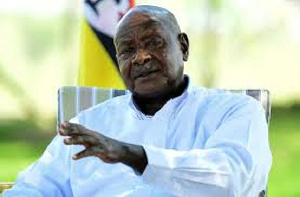Taming the “Silent Killer”- The Place Of Exercise In the Management Of High Blood Pressure
High blood pressure (hypertension) is often referred to as “the silent killer” because though it may be causing a lot of harm to your body, one may be feeling perfectly well. Hypertension can only be diagnosed by taking blood pressure readings and one should not depend on the presence of symptoms before checking.
Hypertension is best managed by combining life-style modifications (exercise and dietary modifications) and medications. For certain blood pressure readings, your healthcare professional will start you on only dietary modifications, exercise and stress management. There are currently many effective medications but without the appropriate life-style changes, your doses and number of medications will be increased over a period to control your blood pressure and reduce the incidence of complications. Increasing the dose and types of drugs also come with an increase of drug side-effects and drug-drug interactions.
Suggestions made here only act as guidelines, only your healthcare professional together with a qualified fitness therapist can recommend the appropriate exercises. It is highly recommended that you get a clearance from your doctor before starting any exercise programme.
Life-style modifications to help manage hypertension:
• Exercise
• No smoking
• Limited (or no) alcohol consumption
• DASH (dietary approaches to stop hypertension) diet : low sodium(salt), increased potassium from fruit and vegetables, low or no saturated fats and increased fibre
• Fat (weight) loss
• Stress management(debatable)
Exercise plays a vital role in the management of hypertension. There are three broad categories of exercise and all of these are vital in the wellbeing of an individual and the lowering of blood pressure
o Aerobics – Moderate intensity aerobic exercise improves cardiac function and lowers blood pressure
o Strength training – Increases endurance, reduces heart’s demands during daily activities, helps to reduce blood pressure at rest, makes client stronger and reduces stress
o Stretching – Plays a complementary role by increasing tendon flexibility, improving joint ROM and function and hence incidence of injury that can cause pain and increase blood pressure. It also enhances muscular performance.
Warm Up and Cool Down: Warming up will take 5-10 minutes each session and should be done religiously. Warming up is the process of preparing the body for more vigorous exercise. It should be gradual and one only needs to break into a light sweat. Cool down should also be long to ensure heart rate etc returns to close to normal levels. Warm up and cool down are extremely important in every exercise regime and more so in one with hypertension or heart disease. NEVER start or end any exercise session without these two.
Certain high blood pressure readings may require rest for a while before exercising. You may need to avoid certain exercises such as abdominal exercises since they cause an increase in intra-abdominal pressure (valsava) and probably blood pressure. In certain cases you may need to avoid strength training or weight training briefly and concentrate on aerobic or cardiovascular exercise such as walking, cycling, treadmill etc. and flexibility exercises.
Many people are wary of weight training or strength training, especially adults with high blood pressure but as stated earlier, this form of exercise also plays a vital role in managing high blood pressure. It is important to note the following:
• Avoid exercises that require lifting weights above the head; supine exercises preferred
• Limit the number of sets and repetitions for upper body exercises e.g. arms, chest, shoulders etc
• Increase or maximize the number of repetitions and sets for lower body exercises such as squats for thighs etc since these tend to help reduce blood pressure through a complex mechanism including peripheral pooling of blood just after exercising
It is important to note that when exercising to control blood pressure (like in all other cases) one needs to start gradually and increase the duration and type of exercises over a period. The rule of thumb is to listen to your body at all times – NO PAIN NO GAIN IS INSANE!!!!
Dr. Kojo Cobba Essel
Medical Doctor & Fitness Therapist
Moms Health Club
www.healthclubsgh.com
Health News of Saturday, 17 May 2014
Source: dr. kojo cobba essel












